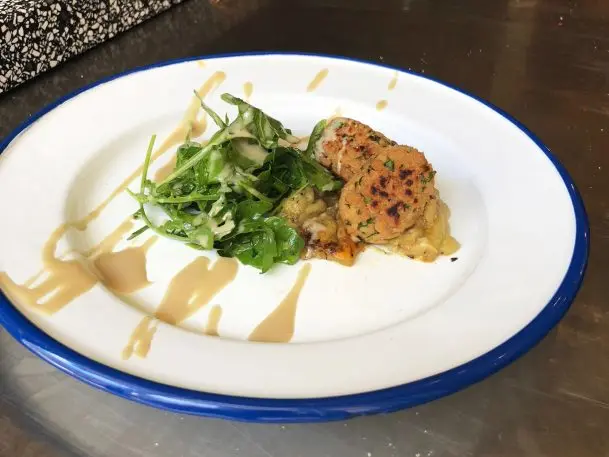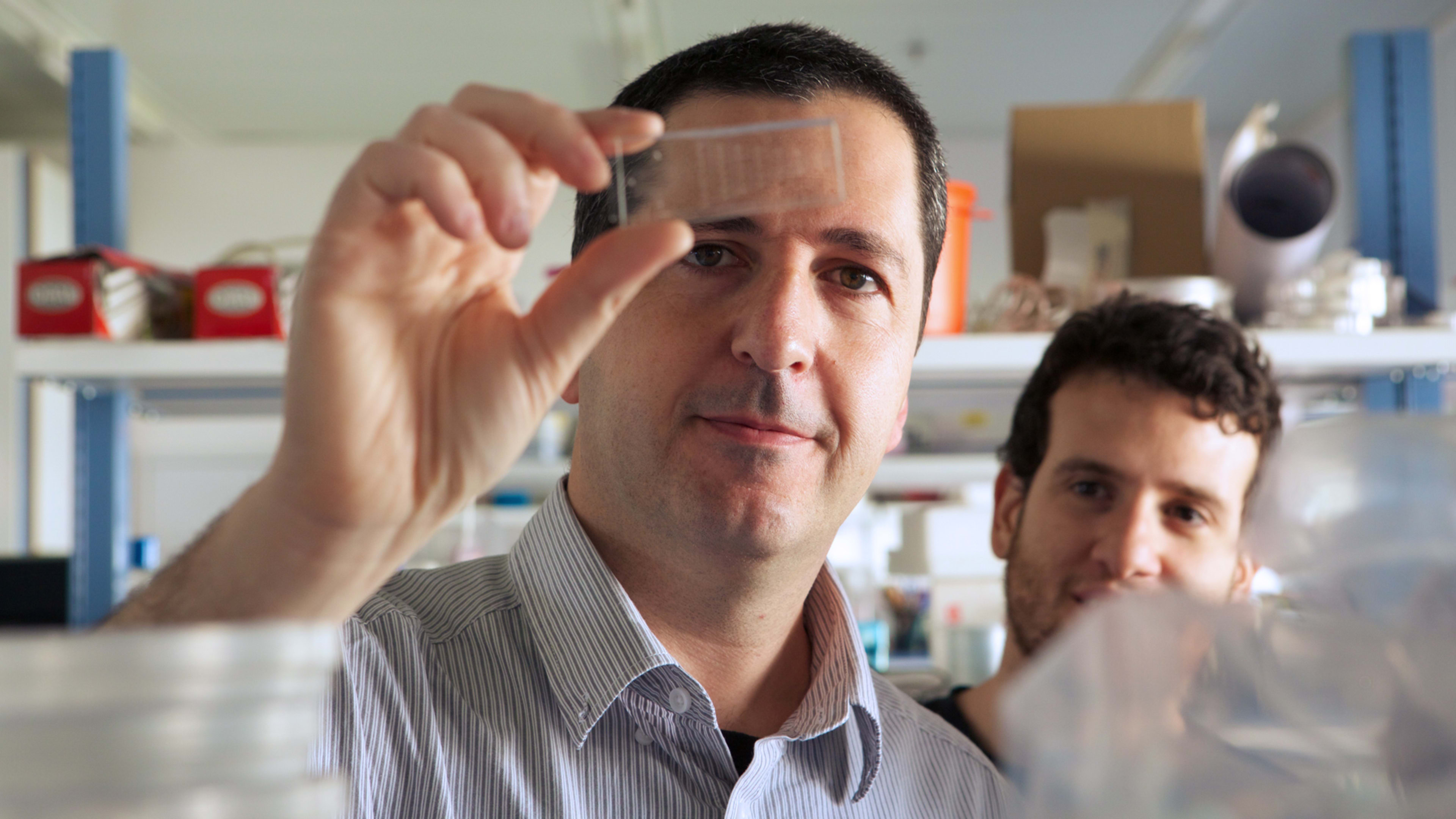In 2013, producing the first lab-grown burger cost $325,000. By 2015, though the cost had dropped to around $11, Mark Post, the Dutch researcher who created the burger, thought that it might take another two or three decades before it was commercially viable. But the first so-called “clean meat,” produced from animal cells without an actual animal, may be in restaurants by the end of 2018.
The Israel-based startup Future Meat Technologies aims to begin selling its first products later this year. The startup’s costs are still very high–around $363 a pound–but it believes that it can cut the cost of cellular agriculture to about $2.30 to $4.50 a pound by 2020. (Post’s $11 burger came in at $37 a pound; as of April, the average wholesale value of beef in the U.S. was $3.28 a pound, though no directly comparable production cost is available.) Today, the startup announced a $2.2 million seed round of investment, co-led by Tyson Ventures, the venture capital arm of the meat giant Tyson Foods.
“Right now, growing cells as meat instead of animals is a very expensive process,” says Yaakov Nahmias, founder and chief scientist of Future Meat Technologies. The startup’s new process is designed to reduce that cost in a few ways. The biggest expense in cellular agriculture is the medium–made of sugars, salts, and amino acids–used for growing cells, which typically has to be replaced as the cells grow. The startup uses a process that cleans and recycles the medium, similar to the way that an animal’s liver and kidneys clean and recirculate blood.

The process also avoids using serums, which are made from animal blood, and which have been used by other companies working in the field, and are both expensive and unappealing to consumers who want to avoid animal products entirely. In addition, rather than using the same type of huge bioreactors that are used in the pharmaceutical industry–and are also very expensive–the company plans to use small units that can be distributed to existing farms.
“If we start small and stay small, we can essentially dramatically reduce the cost, and the capital burden drops by an order of magnitude or more,” Nahmias says. “With these two plays–a more efficient bioreactor and a distributed manufacturing model–we can essentially drop the cost down to about $5 a kilogram [$2.27 a pound]. This is where it starts getting interesting, because the distributed model also allows you to use the current economics.”
Farmers, he suggests, could begin to shift from animal agriculture to cellular agriculture. “These distributive models allow us to grow organically and essentially replace chicken coops with these bioreactors,” he says. “This, I think, is a reasonable way of actually taking over and replacing this industry sustainably.”
The company plans to supply farmers with a small collection of cells or a piece of tissue roughly the size of an coffee capsule, along with the nutrients to feed the cells and the equipment for growing them (the platform can use cells from any animal). Ten to 18 days later, after the tissue has grown, it will be sent to processing plants where it can be turned into “clean meat” for consumers. Turning protein into something with the shape, texture, and mouthfeel of meat has become relatively easy, he says, as companies like Beyond Meat and others have shown with soy and other plant-based proteins.
To address flavor, Future Meat Technologies creates lab-grown fat cells along with muscle cells (it first grows connective tissue cells, which can be induced to turn into either fat or muscle cells). “Most companies today are growing muscle cells . . . they’re producing this mass of protein, but one of the things that’s missing is fat,” says Nahmias. “Fat is what we really crave. Fat is what gives meat its distinct aroma and flavor.” The end result tastes like meat from an animal, with the same nutrition–although because the process is controlled, it’s possible to tweak the ratio of saturated to unsaturated fat to make it healthier.

If a move away from animals seems unlikely, Nahmias argues that it’s necessary as the world adapts to a growing demand for meat at the same time as traditional meat production strains the environment. A quarter of the world’s land, apart from Antarctica, is used for pasture; most deforestation in the Amazon basin happened because of cattle ranching. Livestock is responsible for an estimated 14.5% of all human-caused greenhouse gas emissions. Producing a single pound of beef can take around 1,800 gallons of water. As the world population swells to 10 billion by 2050, we’ll need to produce 70% more food calories–and between 2006 and 2050, demand for animal-based protein is expected to grow 80%.
“Cultured meat is a transformative concept in general,” Nahmias says. “We’re running out of land, we’re running out of water resources, and if you want to continue feeding a growing population not only in the West but also in China and India, where people are moving toward Western-style diets in increasing numbers, then we need to fundamentally change the way we produce meat.”
In 2017, China made a $300 million trade deal with Israel to collaborate on clean-tech projects, including both clean energy and clean meat. “There is a strong interest in China to move into sustainable agriculture in multiple ways,” he says. “This trade deal is definitely part of it and we can definitely take advantage of it if we get to market fast enough.” Chinese VC firm Bits x Bites, the country’s first food tech accelerator, is one of Future Meat Technologies’ investors.
Tyson, which is one of the world’s largest food companies and is known for chicken, sausage, hot dogs, and other meats, doesn’t expect traditional meat production to go away. But the company, which also invested in the lab-grown meat company Memphis Meats, sees an opportunity for new kinds of protein. “It will be a part of the story, over time, in our estimation,” says Justin Whitmore, executive vice president of corporate strategy and chief sustainability officer of Tyson Foods. “The biggest question is how much time, when you’re talking about lab-grown meat.”
One key to widespread adoption, of course, is cost. The Good Food Institute, an organization that focuses on alternatives to animal products, has done research into the financial viability of the clean meat sector as a whole. “I was tasked with figuring out if this clean meat thing is worthy of our time or should we put all of our focus into plant-based meat,” says Liz Specht, the nonprofit’s senior scientist. “I actually came in into that exercise quite skeptical because I’ve done animal cell culture for biomedical R&D, and I knew what the high costs were associated with that. Through doing this analysis I actually did end up quite optimistic.”
Other startups in the space, she says, are also finding ways to drive down the cost of production, though because the products are not yet in production, companies’ specific cost projections are still highly speculative. At least one other company–Just, formerly known as Hampton Creek–also plans to launch its first clean meat product by the end of 2018. The company is aiming for a price within 30% of the conventional product (other companies are also working on recycling the medium and eliminating the use of serum).
Nahmias believes that clean meat will eventually be cheaper than traditional meat from animals. Along with other advantages, such as avoiding the risk of contaminants like salmonella, and eliminating the need for antibiotics, which are heavily used in animal agriculture today, he thinks that clean meat could someday largely replace the traditional version.
“That’s not to say that there are not going to be specialty restaurants producing meat traditionally–more expensive restaurants–but I think the burgers that we’re going to put on the grill, and the chicken nuggets that we’re going to eat at McDonald’s, and the barbecued chicken that we’re going to eat in Chipotle is mainly going to be cultured meat decades from now,” he says.
Recognize your brand’s excellence by applying to this year’s Brands That Matter Awards before the early-rate deadline, May 3.
